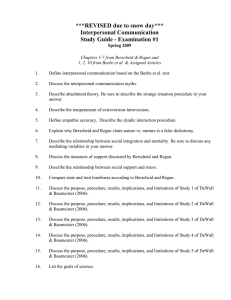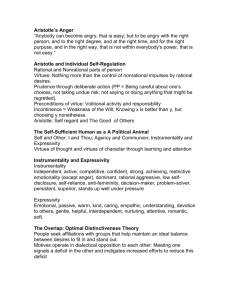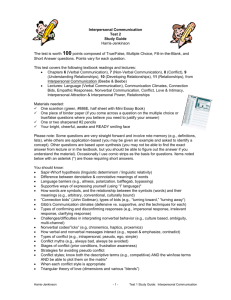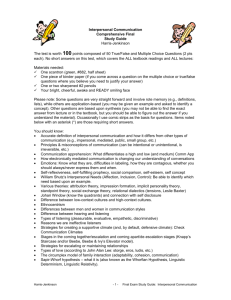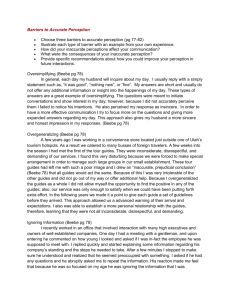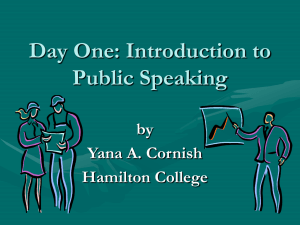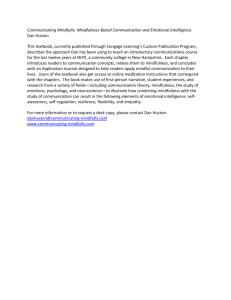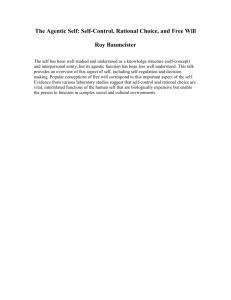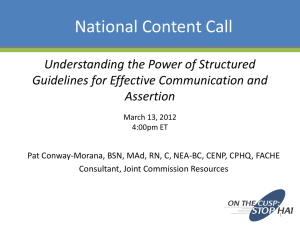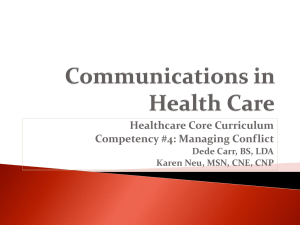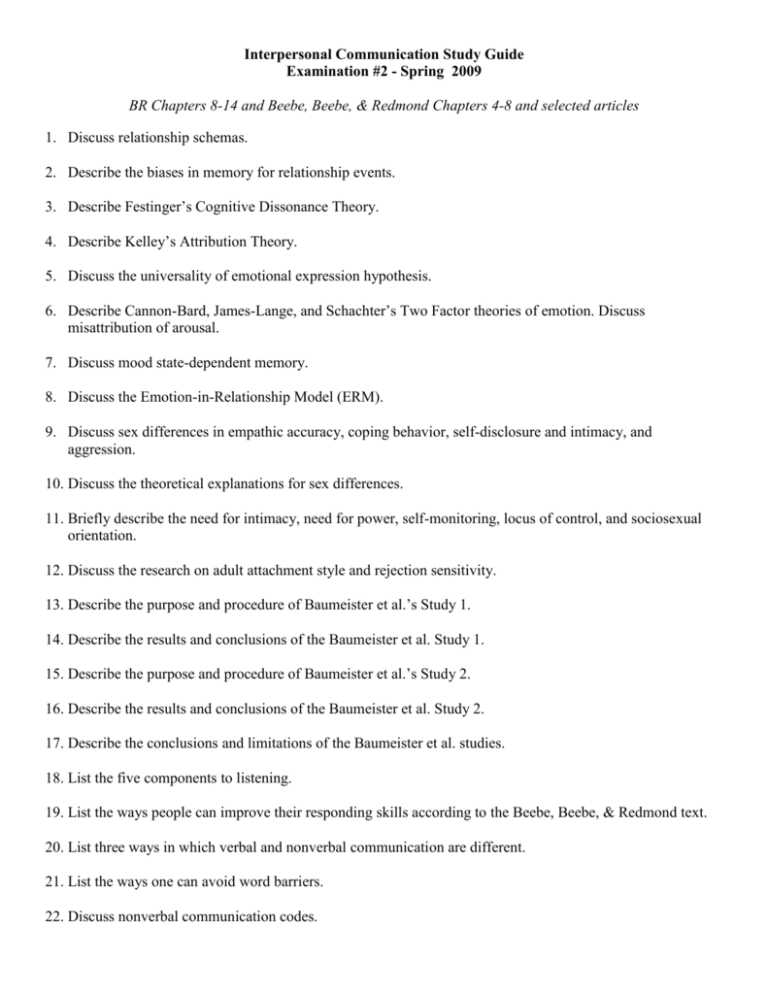
Interpersonal Communication Study Guide
Examination #2 - Spring 2009
BR Chapters 8-14 and Beebe, Beebe, & Redmond Chapters 4-8 and selected articles
1. Discuss relationship schemas.
2. Describe the biases in memory for relationship events.
3. Describe Festinger’s Cognitive Dissonance Theory.
4. Describe Kelley’s Attribution Theory.
5. Discuss the universality of emotional expression hypothesis.
6. Describe Cannon-Bard, James-Lange, and Schachter’s Two Factor theories of emotion. Discuss
misattribution of arousal.
7. Discuss mood state-dependent memory.
8. Discuss the Emotion-in-Relationship Model (ERM).
9. Discuss sex differences in empathic accuracy, coping behavior, self-disclosure and intimacy, and
aggression.
10. Discuss the theoretical explanations for sex differences.
11. Briefly describe the need for intimacy, need for power, self-monitoring, locus of control, and sociosexual
orientation.
12. Discuss the research on adult attachment style and rejection sensitivity.
13. Describe the purpose and procedure of Baumeister et al.’s Study 1.
14. Describe the results and conclusions of the Baumeister et al. Study 1.
15. Describe the purpose and procedure of Baumeister et al.’s Study 2.
16. Describe the results and conclusions of the Baumeister et al. Study 2.
17. Describe the conclusions and limitations of the Baumeister et al. studies.
18. List the five components to listening.
19. List the ways people can improve their responding skills according to the Beebe, Beebe, & Redmond text.
20. List three ways in which verbal and nonverbal communication are different.
21. List the ways one can avoid word barriers.
22. Discuss nonverbal communication codes.
23. Discuss the barriers to effective intercultural communication.
24. Discuss the taxonomy for cultural cognitive styles described in class lecture.
25. Discuss how stereotypes affect the way we process information.
26. Discuss illusory correlation and how it affects stereotypes.
27. Discuss the ingroup differentiation hypothesis and the illusion of outgroup homogeneity.
28. List the three roots of conflict.
29. Draw the active-passive X positive-negative matrix to explain reactions to conflict.
30. Describe ways to negotiate a win-win solution (e.g., logrolling).
31. List the four myths of conflict.
32. List the principles of interpersonal power and the types of power.
33. Describe the prototype approach to love.
34. Discuss passionate love.
35. Name and define the love styles (e.g., eros).
36. Describe the Triangular Theory of Love.
37. Discuss sexual attitudes OR sexual attraction OR sexuality in beginning relationships OR sexuality in
established relationships.
38. Discuss marital satisfaction over time.
39. Describe the three models of marital distress discussed by Huston et al. (2001).
40. Describe the procedure and the comparison groups (e.g., quickly divorced) in the Huston et al. (2001) study.
41. Describe how the comparison groups in the Huston et al. (2001) article differed.
42. Describe results from the PAIR project described in the text (OTHER than the Huston et al. article results).
43. Discuss communication patterns in distressed couples.
44. Discuss the therapeutic approaches to marital therapy.

